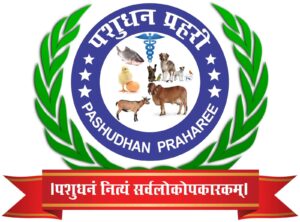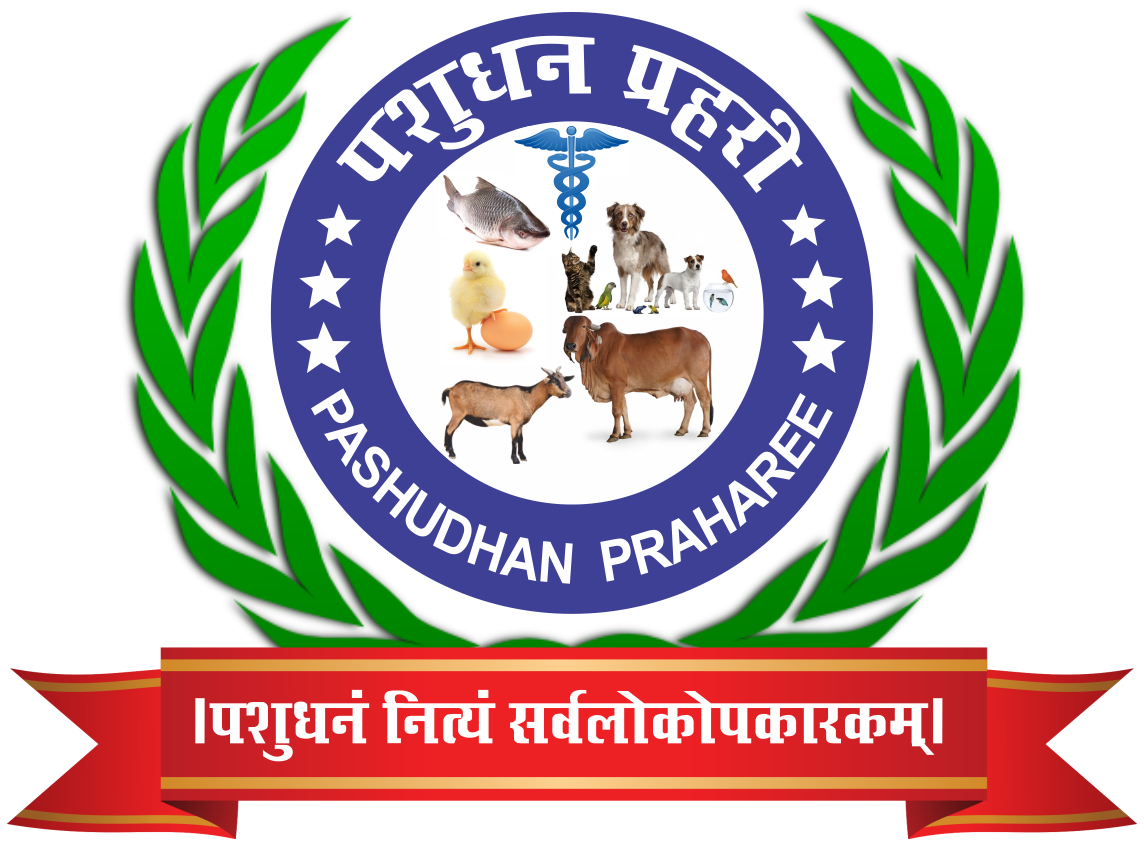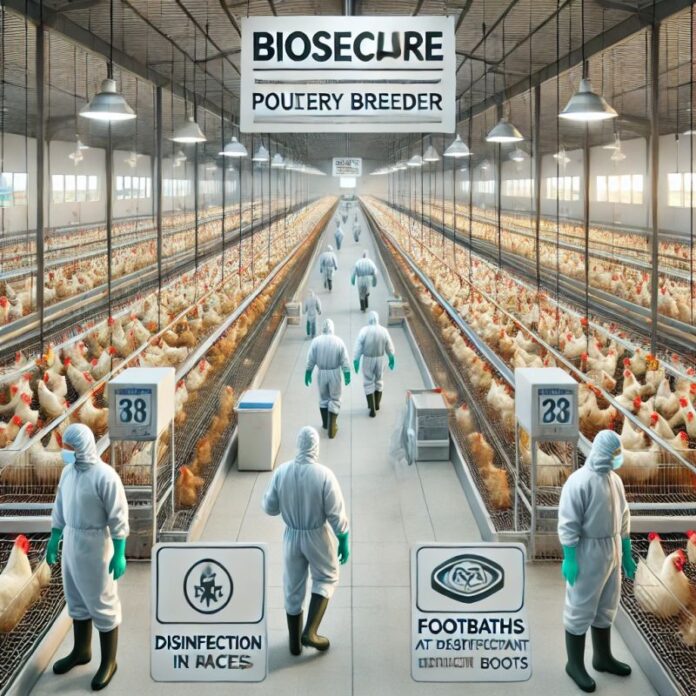Wildlife Control and Farm Biosecurity: Keeping Your Livestock Safe
Dr. Mayank Pal1 and Dr. Aalisha2
- M.V.Sc. student, Wildlife Health and Forensic Centre, College of Veterinary Science & A.H. Anjora, Durg.
- Teaching Associate, Department of Veterinary Pharmacology & Toxicology, College of Veterinary Science & A.H. Anjora, Durg.
E-mail: iamaalisha0412@gmail.com
Highlights
- Farming Challenges:Protecting livestock from wildlife-related diseases, attacks, and property damage.
- Wildlife Control:Use secure fencing, guard animals (dogs, donkeys, llamas), proper waste management, motion-activated deterrents, and habitat modification.
- Vaccination:Essential for preventing diseases like brucellosis, leptospirosis, and foot-and-mouth disease.
- Rabies Prevention:Regular vaccination, controlling wildlife access, monitoring unusual behavior, quarantining new/sick animals, and educating farm workers.
- Outcome:Healthier livestock, improved productivity, and a safer farm environment
Introduction
Farming comes with its share of challenges, and one of the biggest concerns is protecting livestock from wildlife. Wild animals can carry diseases, attack farm animals, and damage property. That’s why effective wildlife control and farm biosecurity are crucial. In this article, we’ll explore safe and ethical ways to keep wild animals away, the role of vaccines in protecting livestock, and how to prevent deadly diseases like rabies.
Safe and Ethical Ways to Keep Wild Animals Away from Your Farm
Keeping wildlife at a distance is essential for livestock health, but it’s important to do so in a humane and ethical manner. Here are some strategies to consider:
- Secure Fencing
A well-constructed fence is the first line of defense against predators like foxes, wolves, and wild dogs. Electric fences can be particularly effective, discouraging animals without harming them. Barbed wire or mesh fences should be properly maintained to prevent breaches. Farmers should also consider adding underground barriers to stop burrowing animals like badgers and coyotes from accessing enclosures.
- Guard Animals
Using livestock guardian dogs, donkeys, or llamas can help keep predators at bay. These animals have natural protective instincts and can deter threats. Breeds such as Great Pyrenees, Anatolian Shepherds, and Maremma Sheepdogs have been successfully used to protect livestock. Donkeys and llamas are also highly effective since they are naturally aggressive toward predators and can alarm farmers of any approaching danger.
- Proper Waste Management
Food waste and carcasses can attract scavengers like coyotes, raccoons, and vultures. Proper disposal and regular cleaning of feeding areas reduce the risk of wildlife encounters. Farmers should consider composting waste materials away from animal enclosures and using sealed containers to store feed. Keeping grain silos and barns secure also helps prevent rodent infestations, which in turn attract larger predators.
- Motion-Activated Deterrents
Installing motion-activated lights, sprinklers, or sound devices can startle wild animals and discourage them from approaching. Solar-powered deterrents that emit flashing lights or predator calls can also be effective in keeping nocturnal animals at bay. These methods work well when used in combination with fencing and guard animals.
- Habitat Modification
Removing dense brush, trimming overgrown vegetation, and sealing off small entry points in barns and sheds can limit hiding spots for unwanted wildlife. Farmers should conduct routine inspections of their property to identify potential nesting or denning areas for wild animals. Encouraging natural predator-prey balance by fostering healthy ecosystems on the farm can also minimize conflicts with wildlife.
The Role of Vaccines in Protecting Livestock from Wildlife-Borne Diseases
Wild animals can carry infectious diseases that spread to farm animals. Vaccination is one of the most effective ways to protect livestock. Here are some key vaccines farmers should consider:
- Brucellosis Vaccine
Brucellosis, transmitted by wild deer, bison, and feral pigs, can cause abortions in cattle and sheep, leading to significant economic losses. Vaccination helps prevent outbreaks and ensures herd health. Farmers should work with veterinarians to implement testing and biosecurity measures alongside vaccination programs.
- Leptospirosis Vaccine
Leptospirosis is spread through the urine of infected wildlife, contaminating water sources. Vaccinating cattle and pigs helps reduce the risk of infection. Leptospirosis can also affect humans (a zoonotic disease), so farmers should wear protective gear when handling infected animals and maintain proper sanitation in water sources.
- Foot-and-Mouth Disease (FMD) Vaccine
Wildlife such as wild boars can spread FMD, a highly contagious disease affecting livestock. Regular vaccination in at-risk areas helps prevent outbreaks. FMD can devastate an entire farming operation, so farmers should establish quarantining protocols for new animals and enforce movement restrictions if an outbreak is suspected.
How to Prevent Rabies and Other Deadly Diseases in Farm Animals
Rabies is one of the most dangerous wildlife-borne diseases that can affect farm animals and even humans. Here’s how farmers can protect their livestock:
- Regular Rabies Vaccination
Horses, cattle, sheep, and other livestock in high-risk areas should receive rabies vaccinations. This prevents transmission from infected wildlife such as bats, raccoons, skunks, and foxes. Farmers should consult their veterinarians about the appropriate vaccination schedules for different species.
- Controlling Wild Animal Access
Reducing access points to barns and feed storage areas helps keep rabid animals away. Installing secure fencing, sealing small openings, and using predator-proof enclosures for young livestock are key measures to reduce exposure.
- Monitoring and Reporting Unusual Animal Behavior
Wild animals acting aggressively, foaming at the mouth, or appearing disoriented may be rabid. Farmers should report sightings to local animal control authorities immediately. Quick response can prevent the spread of rabies to livestock and people.
- Quarantining New or Sick Animals
Introducing new animals to a farm requires proper quarantine procedures to prevent potential disease spread. Farmers should isolate sick animals and seek veterinary guidance to diagnose and treat infections. Biosecurity measures such as foot baths, disinfectant stations, and controlled farm access further minimize the risk of disease transmission.
- Educating Farm Workers and Family Members
All farm workers should be trained on the risks of wildlife-borne diseases and the importance of vaccination and biosecurity measures. Knowing how to recognize disease symptoms early can make a significant difference in containing outbreaks. Farmers should also provide protective equipment, like gloves and boots, for handling potentially infected animals.
Conclusion
Wildlife control and farm biosecurity go hand in hand when it comes to protecting livestock from diseases and predators. By implementing safe and ethical deterrents, vaccinating animals, and taking proactive measures against deadly diseases like rabies, farmers can create a healthier and more secure environment for their livestock.
Taking these steps not only safeguards animal health but also contributes to the sustainability and profitability of the farm as a whole. A well-protected and disease-free herd ensures better productivity, stronger economic returns, and a safer farm environment for both animals and people.



